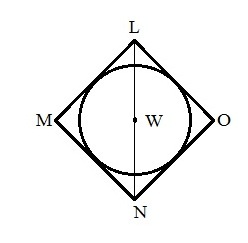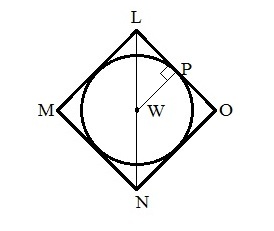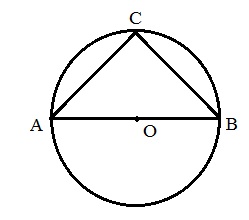Circles Review – Fundamentals of Circles, Formulas for Circle, Congruent Circles, Tangent to a circle, Polygon inscribed in a Circle , Circle inscribed in a circle, Concentric Circles
Class Questions – Exercise 1 Exercise 2 Exercise 3 Exercise 4 Exercise 5
Practice Questions – Solutions
–————————————————————————
Q. 9
In the above figure, a circle is having center at W and radius 8. A square LMNO is circumscribed about the circle, then LN =?
A. 12√3
B. 10√2
C. 16√2
D. 4√π
E. 18
Solution;
As LMNO is a square and circumscribed the circle. LO will be tangent to circle, if we draw a line from center of circle as WP, it will make a right angled triangle LPW.
WP = Radius of circle = 8
As LMNO is square so each side of it will be = Diameter of circle
Hence, LP = radius of circle = 8
Using Pythagorean Theorem we can easily find the side ‘LW’ of the triangle LPW.
LW 2 = LP2 + PW2
= 82 + 82
= 64 + 64
= 128
Taking square root both side,
LW = 8√2
LW = WN = 8√2
So, LN = LW + WN
= 8√2 + 8√2
= 16√2
So correct answer choice is ‘C’.
—————————————————


